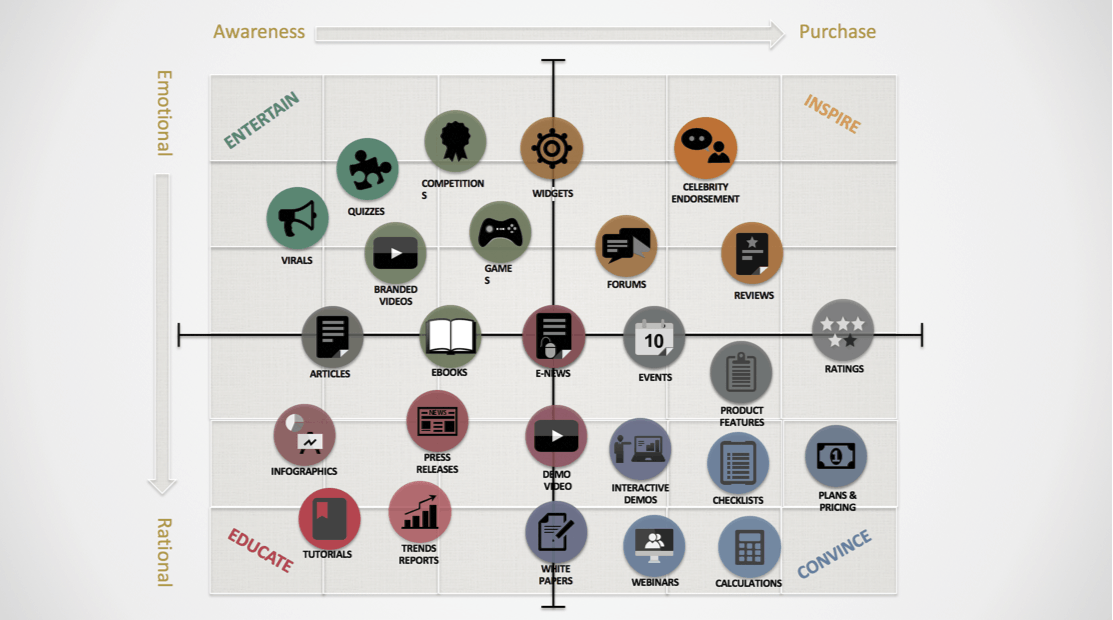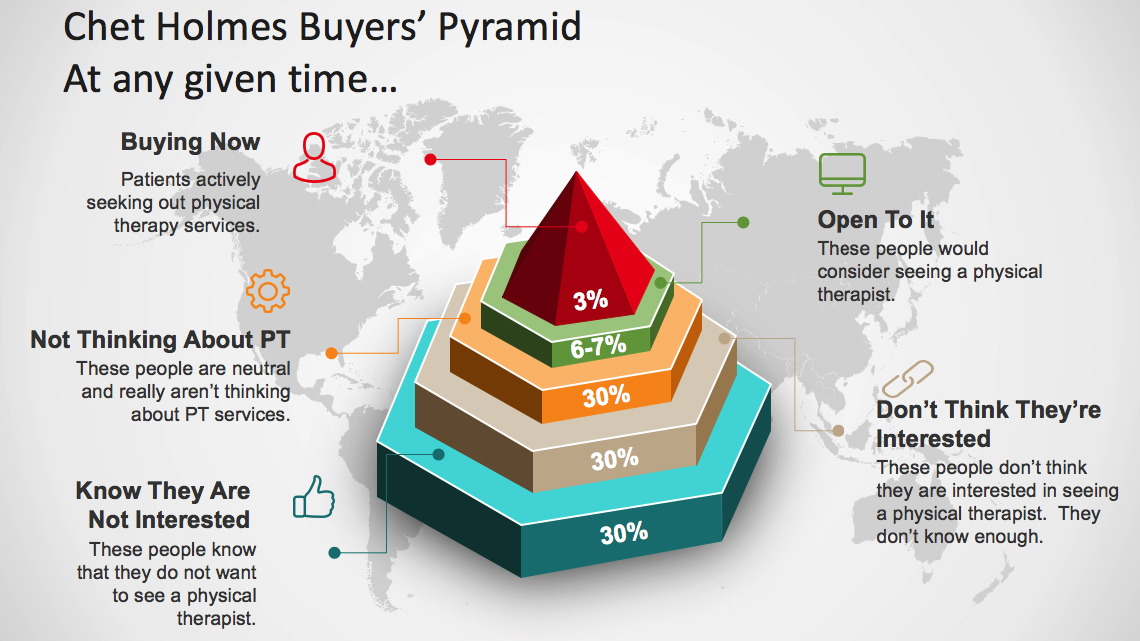For the Most Effective Long-Term Strategy, Content Marketing is King
An essential recommendation that we’ve touched on several times throughout this blog series is to develop a better grasp of who is—and who isn’t—actively looking for a physical therapist, and how this should affect your marketing strategy. This is a universal concept that applies to all aspects of marketing your private physical therapy practice, so it’s worthy of a closer look.
To develop a clearer picture of the whole of society and how much the average person is considering the prospect of physical therapy, it helps to get acquainted with the 6-7%, which was created by marketing consultant Chet Holmes in his book, The Ultimate Sales Machine. The pyramid breaks down the consumers in any market into five categories based on their interest levels, and for physical therapy marketers, your audience looks like this:
- About 3% of people are interested in starting physical therapy and looking to set up their first appointment right now
- About 6-7% are open to the idea of seeing a physical therapist, but not actively pursuing it or looking into options
- About 30% are neutral, meaning they probably have not given any thought to undergoing physical therapy, but might be interested in it
- About 30% are pretty sure that they are good “as is,” and don’t need physical therapy, but they haven’t completely ruled it out
- About 30% are certain that they don’t want or need physical therapy
It’s a Conceptual Model but Fairly Close to Reality
These statistics may appear to be discouraging, but they should serve as an important reality check. If you buy into this model, it shows that only about 10% of the public is actually receptive to physical therapy as a solution to their pain, and only 3% is at the point where they are actively searching for a therapist or practice to begin treatment with.
The research supports this as well:
- Only about 7-8% of lower back pain patients see a PT, but the value proposition is clear [1]
- Clinical guidelines suggest that seeing a PT early on for neck pain is of high value. [2]
- Yet, referrals to physical therapy are declining according to some research. [3]
Example Patient in Your Community with Low Back Pain
Let’s consider an example. Let’s say that someone in your community has back pain. Who do they think of as the primary care providers for back pain? Most would say a medical doctor and others a chiropractor. The evidence supports this. This is the reality of most communities. Physical therapy is lost in obscurity.
How does a practice rise out of obscurity and become a treatment option for the average consumer?
Enter Content Marketing – An Affordable Method that Can Pay Off Down the Road
The remaining 90% of the people discussed above, is a portion that needs to be nurtured in the long term. Since these individuals don’t generally care much about physical therapy—or downright don’t want it—you need to work on fostering a relationship that will help them get to know, respect, and eventually trust you. With this approach, when the time comes that they do need a physical therapist, they’ll be far more likely to keep you in mind.
This is why traditional marketing may not be as effective for this population. Instead, you should focus your efforts on content marketing.

Content marketing is defined as follows: Content marketing is a strategic marketing approach focused on creating and distributing valuable, relevant, and consistent content to attract and retain a clearly defined audience — and, ultimately, to drive profitable customer action. [4]
Online or Offline – Content Marketing Applies to Both
Content marketing can apply to both your online and offline strategies. When devising a content marketing plan, it may help to follow the 80/20 rule:
- 20% of your content should be clearly self-promotional
- The other 80% should be useful, interesting, and educational, thereby benefiting anyone that reads it
Educational content that covers a range of topics related to:
- Obtaining value from healthcare providers,
- Conservative care options
- Sports health,
- Fitness,
- Exercise, and
- Nutrition
Many of these topics will be immediately helpful to potential patients/readers and will also stand the test of time. In addition, by showing your audience that you are an authority source that provides reliable answers to some of their most common questions, they’ll keep coming back to you in the future to read more. This will in turn will help build trust and will likely place you in the running if—and when—a time comes that physical therapy might be needed.
We hope this series has shown that there is an abundance of options for both inbound and outbound marketing, and there are plenty of benefits of both approaches. Utilizing some of each and diversifying your tactics will likely yield the greatest return, but what works for your private physical therapy practice will be completely unique to your goals, message, and budget.


Leave a Reply
You must be logged in to post a comment.